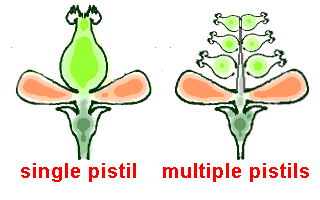 Strawberry plants are members of the Rose Family, the Rosaceae, and belong to the genus Fragaria, of which 24 naturally occurring species are recognized, three in North America. Strawberry's technical binomial is Fragaria x ananassa, the "x" indicating that the garden strawberry plant is a hybrid. In the 1750s it was first developed in Brittany, France, by crossing Fragaria virginiana of eastern North America with Fragaria chiloensis of Chile
Strawberry plants are members of the Rose Family, the Rosaceae, and belong to the genus Fragaria, of which 24 naturally occurring species are recognized, three in North America. Strawberry's technical binomial is Fragaria x ananassa, the "x" indicating that the garden strawberry plant is a hybrid. In the 1750s it was first developed in Brittany, France, by crossing Fragaria virginiana of eastern North America with Fragaria chiloensis of Chile

Being in the Rose Family, it's no surprise that strawberry flowers differ from the "average blossom" described on our Standard Blossom" page in the fundamental manner shown at the left. Our "average" Standard Blossom possesses a single pistil -- in the drawing the pistils are the green items, composed of stigma, style and ovary -- while strawberry flowers bear multiple pistils. The strawberry fruit's bizarre structure becomes understandable only when we take the flower's multiple pistils into account.

At the right you see how our diagram of a flower with multiple pistils translates into a strawberry flower. A big difference between the sketch and the actual flower is that on the drawing the pistils arise from a tall, slender item, while in the strawberry flower they cluster atop a low, hemispherical mound, known as a receptacle or "torus." Notice at the receptacle's top the many pistils' small, fingerlike styles poking upward, each tipped by a tiny stigma. Each style arises from it own pale, seed-like ovary.

At the left you see what happens once the pistils have been pollinated, the stamens with their anthers emptied of pollen are shriveling and turning brown, and the white petals haven fallen away, leaving a green calyx beneath the rapidly enlarging receptacle. As the receptacle enlarges, the pistils remain small and drift apart, with ever more receptacle tissue appearing between them. As the much-slower growing pistils mature, their styles and stigmas also shrivel and turn brown.

At the right you see what eventually comes of it all. The spongy-looking receptacle has become the bright red "flesh" of what most people think of as the strawberry fruit. And the pistils have become those pale, grainy things that sometimes get stuck between one's teeth.
However, it's those pale, grainy things that are the actual strawberry fruits. They're achene-type fruits, meaning that they're dry, bear only one seed, and don't split open at maturity. In Nature all this makes perfect sense when an animal, attracted by seeing the receptacle's bright red flesh, eats the whole thing. While the receptacle flesh nourishes the animal's body, the hard little fruits pass through the body while being transported to new territory and finally even fertilized when the animal poops.